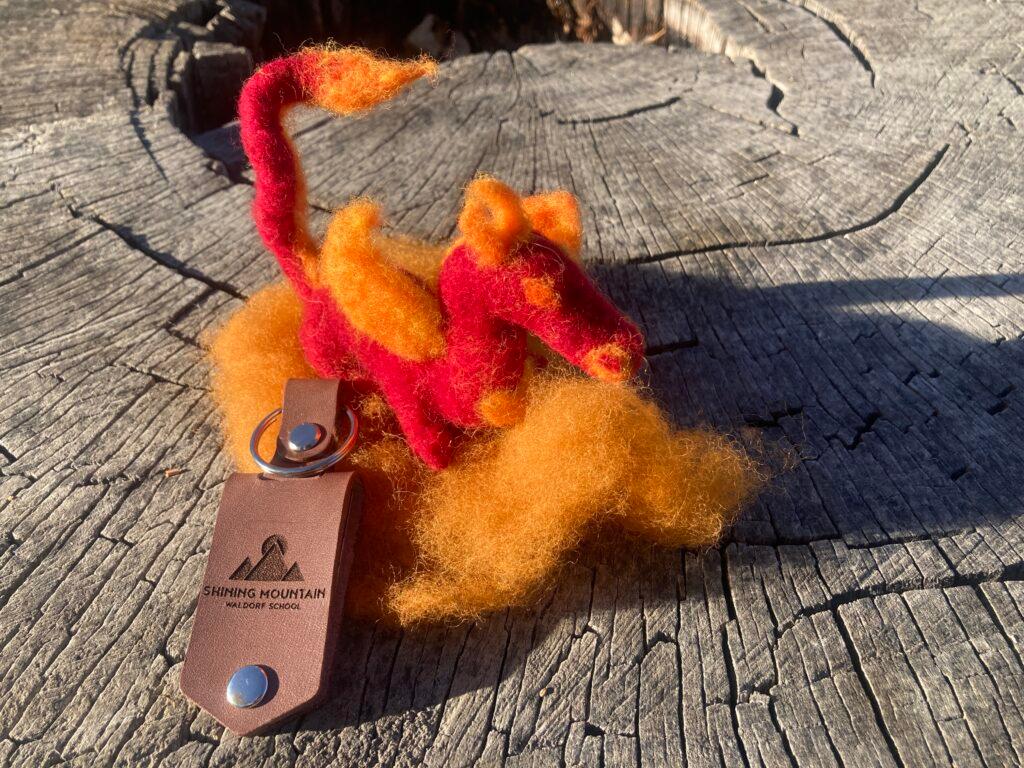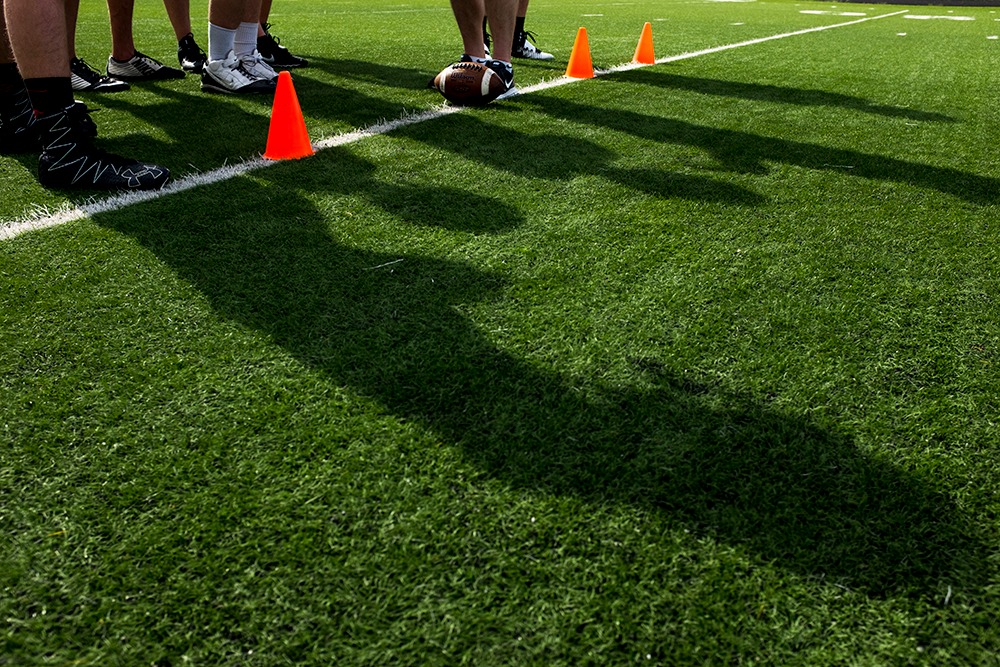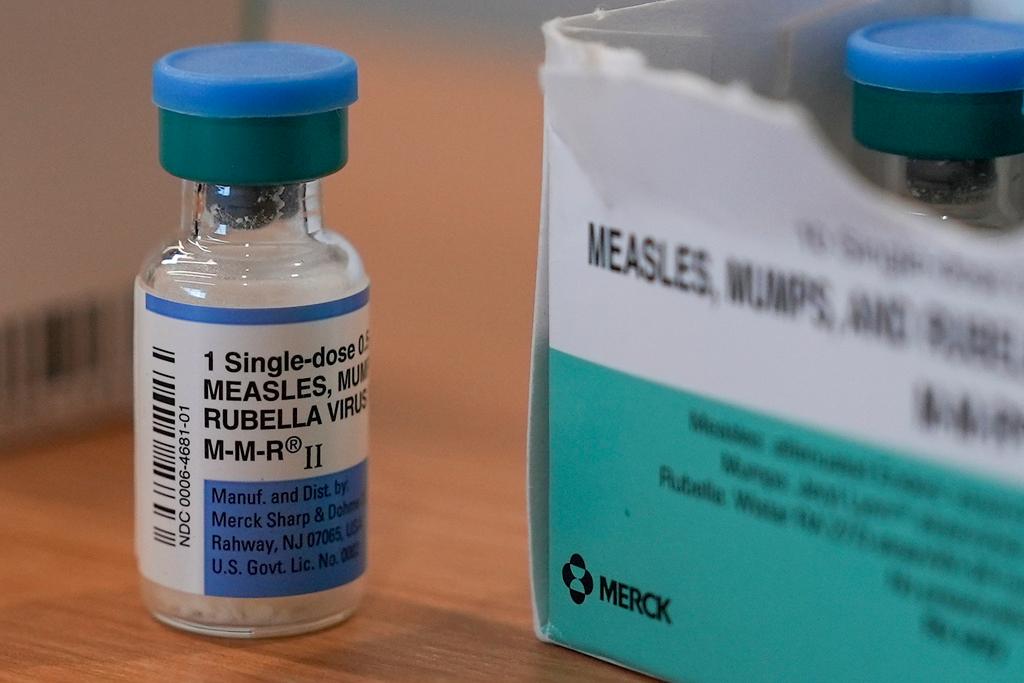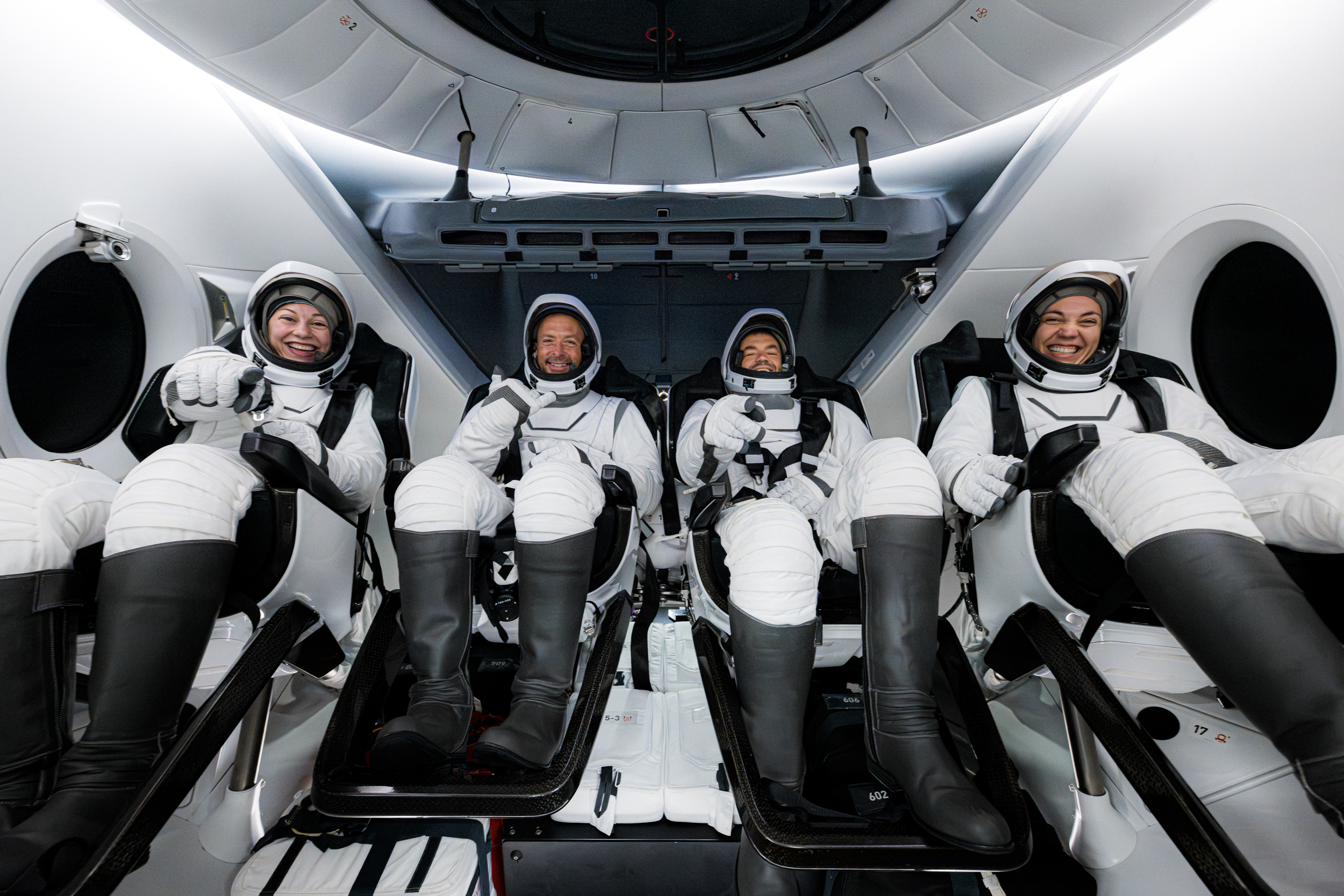
The privately-funded Polaris Dawn space mission that splashed down in the Gulf of Mexico last month was one for the record books.
The four-person crew traveled farther into space than any human has gone since the moon landings. Two members logged the first-ever spacewalk by a commercial crew. And astronaut Sarah Gillis, who grew up in Boulder, became the youngest person ever to perform a spacewalk.
Gillis, 30, a space operations engineer at SpaceX, was accompanied on this mission by Scott “Kidd” Poteet, a former Air Force officer who until recently lived in Monument; Anna Menon, also an operations engineer with SpaceX; and Jared Isaacman, the billionaire who funded it.
Isaacman plans two more Polaris missions, each designed to advance the knowledge needed for human exploration of space, especially journeys to the moon and Mars. Polaris Dawn is closely tied to SpaceX: it launched on a Falcon 9 rocket, traveled in the reusable Crew Dragon capsule Resilience, and took the company’s newly designed spacesuits out for a spin.
Here are some takeaways from Gillis’ and Poteet’s recent interview with Colorado Matters:
Fighting motion sickness, 'space fog' and 'space lag'
A significant goal of the Polaris Dawn mission was to study the effects of space travel on the human body.
“The human body was not designed to exist and live in microgravity,” Gillis explained. “We evolved with the gravity vector, and so as soon as you get to space, pretty much immediately you experience all of the fluids in your legs moving towards your head.”
That causes what astronauts call “space fog.”
“You are absolutely not as sharp as you used to be. Your body is now kind of on overload, where it's processing new physics,” Gillis said. “And so you're immediately learning how to float and how to perceive this new environment. It's almost like you're immersed in a foreign language and your brain is processing it.”
In addition, the body is suddenly floating, and that can cause motion sickness. Poteet was worried.
“I am highly susceptible to motion sickness. Despite the fact that I come from a fighter jet background, you stick me in the back of Uber, I'm done,” Poteet said.
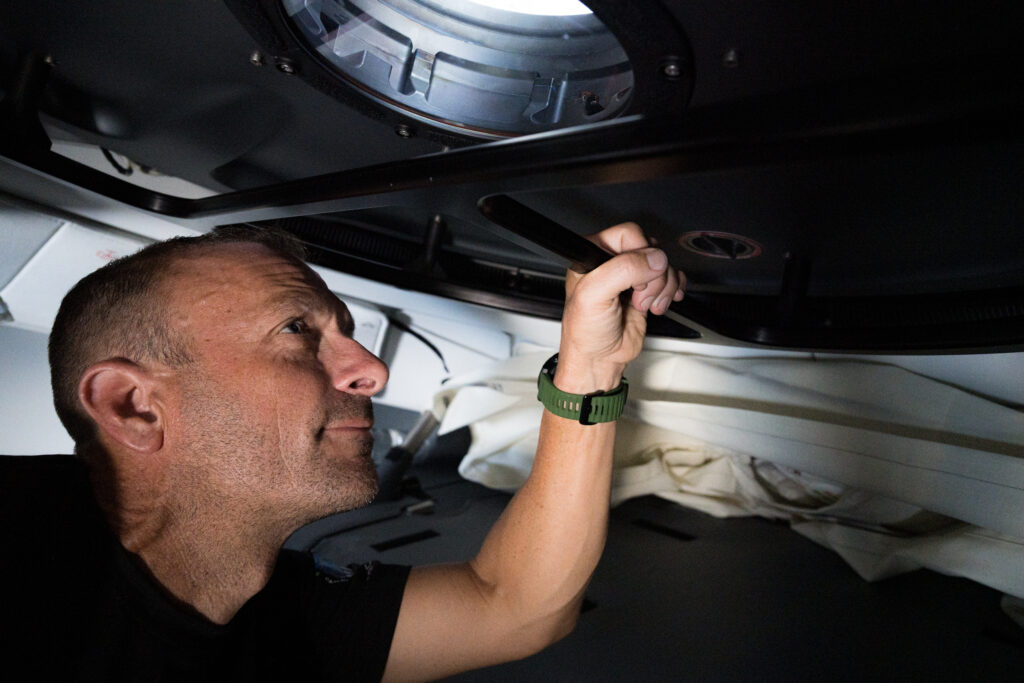
Fortunately, neither Poteet nor Gillis got sick. However, the sensation of being in space stayed with them long after splashing down, not unlike the rocking feeling many people experience after being on a boat.
“Coming back to Earth, I actually kind of preserved this feeling of floating for almost the last week, which has been so cool,” Gillis said. “It's like my body feels really light as if I am still up there and I can still kind of levitate and move around.”
Closing their eyes and seeing blue stars
Immediately after launch Polaris Dawn was hurled farther into space than any human has gone since the moon missions. The capsule headed 3 times farther than the International Space Station, to an area known as the Van Allen Radiation Belts.
These belts encircle the Earth with massive amounts of trapped radiation that NASA describes as “one of the largest hazards for astronauts traveling to Mars.”
“If we're going to go to Mars someday, we need to learn more about how vehicles behave in these environments, whether or not we have the right software for the avionic system to protect from radiation upsets, how does the human body perform,” Gillis said.
To minimize the crew’s exposure to radiation, Polaris Dawn followed an elliptical orbit that touched on the lower belt and then flew out.
The crew’s radiation exposure was the “equivalent of spending about three months on the ISS right now,” Poteet said, or having about 75 x-rays.
The capsule performed well, Gillis said, and the astronauts noticed something unusual.
“We actually observed these really interesting light flashes on the eyeball when you're passing through that Van Allen radiation belt,” Gillis said. “When you close your eyes as you're passing through this portion, you can actually see almost like blue stars or white streaks flashing across your eye.”
The Spacewalk: a 'choreographed dance'
After leaving behind the Van Allen Belt, Polaris Dawn dropped to a closer Earth orbit to perform experiments. The highlight was the first-ever spacewalk by a commercial (non-government) crew.
The SpaceX Dragon capsule has no airlocks that would keep an inner compartment pressurized while someone goes out into space. Instead, everyone in the capsule put on a spacesuit, and the capsule was slowly depressurized. For the spacewalks, Isaacman unbuckled first and moved to a platform outside the capsule. When he returned it was Gillis’ turn.
Her oxygen was provided by her spacesuit’s “umbilical cord” that tethered her to the spacecraft, though she said she wasn’t worried about floating away.
“Space is actually very, very gentle,” Gillis said. “Once the atmosphere is out of the spacecraft, there's nothing that's pulling you or sucking you out into the vacuum of space.”
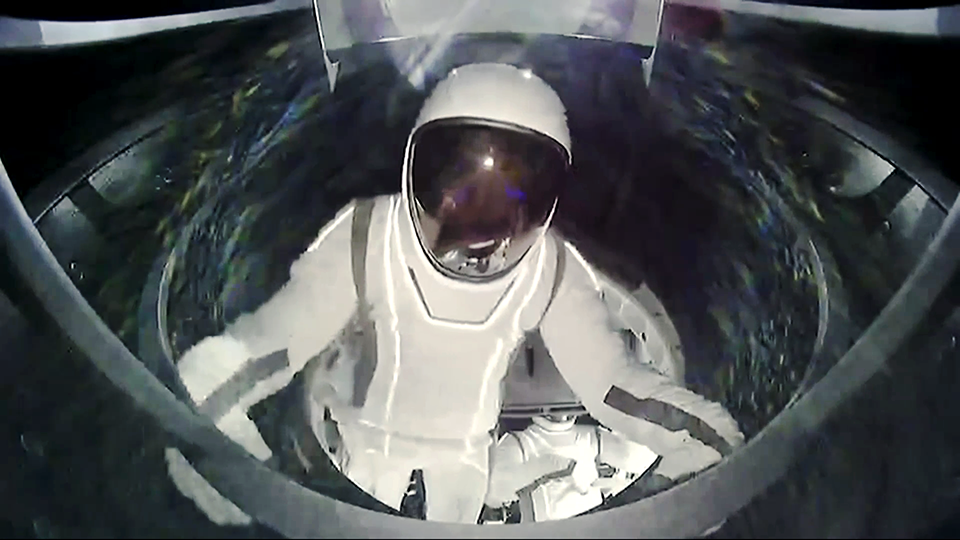
Gillis performed a series of maneuvers that she and engineers had carefully practiced on Earth.
“Historically, you put space suits into a pool, into neutral buoyancy, and then you're able to stimulate the spacewalk. But the SpaceX team didn't want to put their new hardware into a pool,” she said. “So we came up with an alternate kind of hoist suspension system that offloaded a pressurized suit and allowed us to practice with choreography.”
“So maybe not quite dancing in the form you typically see, but it absolutely is a choreographed dance.”
Commercial space exploration 'just opens so many doors'
Poteet, who spent a career in the US Air Force, is optimistic about the contribution that private space missions can make.
“It just opens up so many doors for where we can take this with regard to space exploration,” he said while acknowledging that each step needs to be taken carefully.
“It's a very austere environment, space,” he said. “There is a lot of risk out there in the expansion of space. It's truly a marathon, it's not a sprint, and we need to make sure that we take the necessary measures as we do advanced space exploration.”
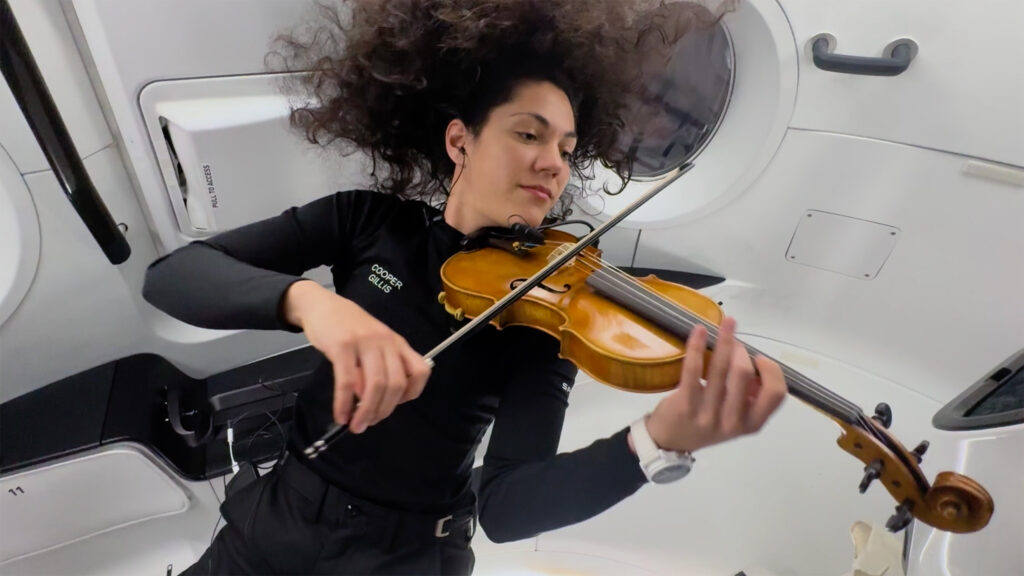
Next stop Mars?
The Polaris program is doing some of the research deemed necessary for a potential human trip to Mars one day. Would Poteet and Gillis raise their hands?
Poteet demurred.
“Ooh, that is a tough one. I'm 50,” he explained. “By the time we go, I don't know if I'm going to be physically able to handle that eight-plus months journey to get to Mars.”
Poteet recommended Gillis for the job, and she was more intrigued.
“I would certainly want to know a lot more about the mission and all of the technical specifics, for satisfying my engineering brain,” she said. “Certainly if there were a return trip, I would consider going.”
